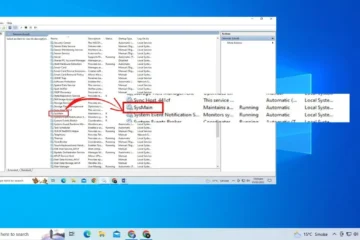Demystifying DHCP Servers
In the world of networking, the term “DHCP” often crops up, yet many users may not fully understand its significance. DHCP, or Dynamic Host Configuration Protocol, plays a vital role in simplifying the process of assigning IP addresses to devices on a network. In this guide, we’ll demystify DHCP servers and explore their importance in modern networking.
Understanding DHCP
DHCP stands for Dynamic Host Configuration Protocol. At its core, DHCP automates the process of assigning IP addresses to devices on a network. Instead of manually configuring each device with an IP address, subnet mask, gateway, and DNS server, DHCP streamlines the process.
Why DHCP Matters
Before DHCP, network administrators had to manually assign IP addresses to every device, which was cumbersome and prone to errors. DHCP offers several key benefits:
Automation: DHCP automates IP address assignment, saving time and reducing human errors.
Efficiency: It ensures efficient use of IP addresses by recycling them when devices disconnect or are no longer in use.
Scalability: DHCP can scale to accommodate a growing number of devices on a network.
Centralization: In large networks, DHCP servers centralize IP address management, making it easier to maintain and troubleshoot.
Flexibility: DHCP allows for dynamic IP assignment, where devices receive IP addresses temporarily, or static IP assignment for devices that need fixed addresses.
How DHCP Works
When a device connects to a network, it sends a DHCPDISCOVER message, essentially saying, “I need an IP address.” DHCP servers on the network respond with a DHCPOFFER, offering an IP address. The device selects one offer, sends a DHCPREQUEST, and the server acknowledges with a DHCPACK, providing the device with an IP address and configuration details.
Lease Durations and IP Address Allocation
IP addresses are leased, not owned permanently. Lease durations can range from minutes to days, depending on network requirements. Shorter leases are suitable for dynamic networks, while longer leases work for stable setups.
The Benefits of Dynamic IP Assignment
Dynamic IP assignment, managed by DHCP, offers numerous advantages:
Efficiency: IP addresses are allocated as needed, reducing the chances of running out of available addresses.
Ease of Management: Devices automatically receive IP addresses without manual configuration, simplifying network management.
Address Reuse: IP addresses are recycled when devices disconnect, ensuring optimal use of available addresses.
Flexibility: Devices can move between networks without manual IP reconfiguration.
Types of DHCP Servers
There are different types of DHCP servers, tailored to various network setups:
Home Routers: Common in small-scale networks, such as home Wi-Fi setups. They handle DHCP for devices within a home network.
Enterprise-Level DHCP Servers: Found in large-scale networks, like corporate environments, where centralized IP management is crucial.
DHCP Relay Agents: Extend DHCP server reach in complex network architectures, ensuring IP assignment across subnets.
Security Considerations
While DHCP simplifies network setup, it also poses security challenges. Unauthorized DHCP servers can disrupt network operations or provide incorrect IP information. Implementing DHCP snooping and other security measures is essential to protect against such threats.
Conclusion
DHCP servers are the unsung heroes of modern networking, streamlining IP address assignment and simplifying network management. Understanding how DHCP works and its significance in your network setup is essential for efficient and secure network operations.
In this guide, we’ve demystified DHCP servers, showcasing their role in providing seamless connectivity in a dynamic world of devices and networks. Whether you’re managing a small home network or overseeing a vast corporate infrastructure, DHCP remains a fundamental component, ensuring devices can communicate effectively.
As you delve deeper into the world of networking, DHCP servers will continue to play a pivotal role in making your digital interactions smoother and more efficient.



